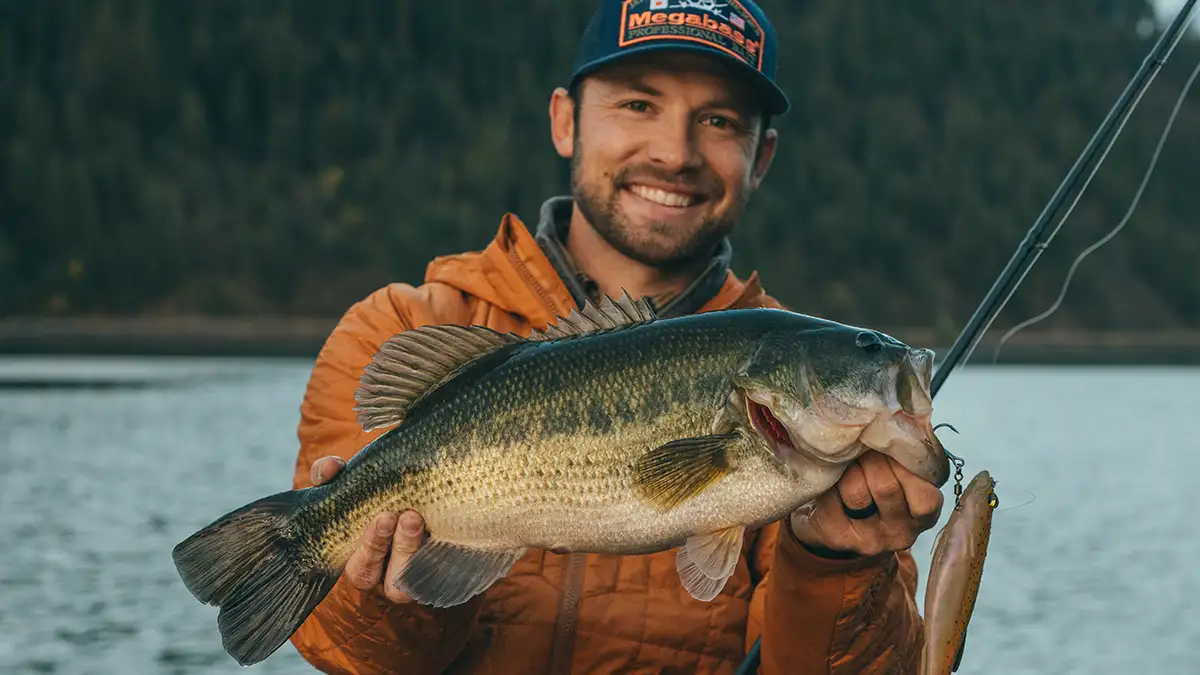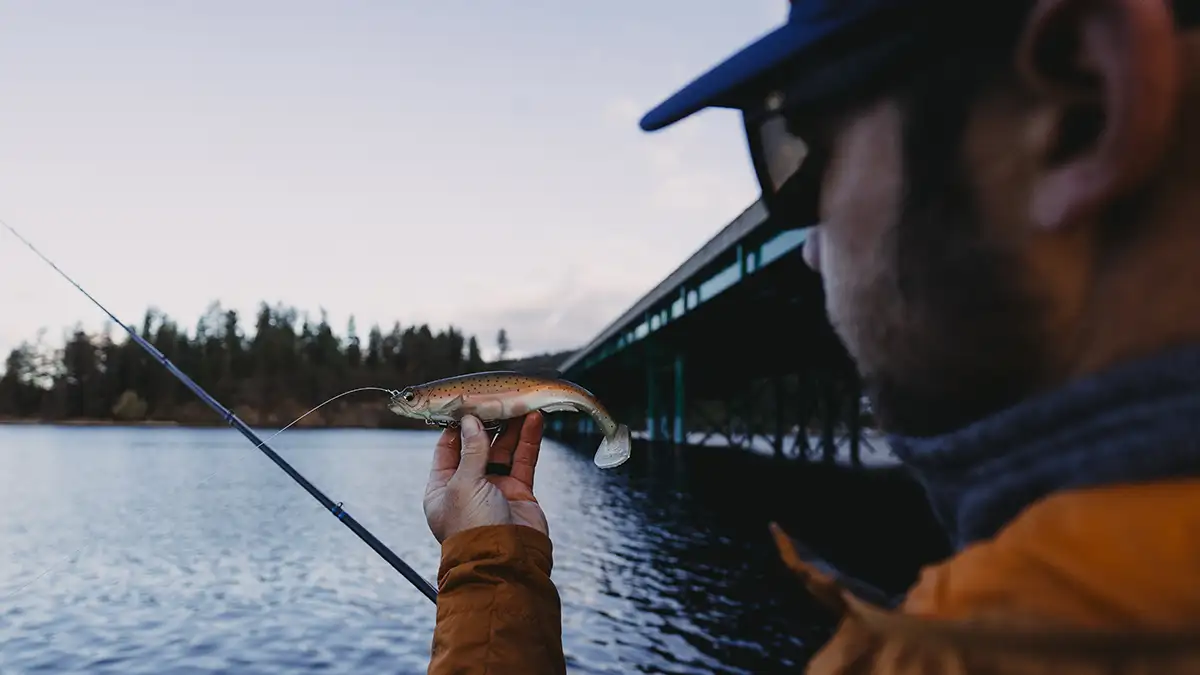Over the course of his dozen-plus years as a professional angler, Brandon Palaniuk has proven himself to be one of the most versatile competitors in the game, as evidenced by two Angler of the Year awards and six B.A.S.S. wins. Even with his ability to effectively use a variety of techniques he retains a strong affinity for chucking big baits.
Fishing big glide baits and swimbaits isn’t necessarily the hardest part, as they’ve proven time and again to produce tournament-winning fish. But knowing when to pick them up and when to put them down has been the downfall of many otherwise solid game plans.
WHERE AND WHEN TO THROW BIG BAITS
Sometimes the window of opportunity is a porthole, and other times it’s like a massive set of sliding doors. Palaniuk’s initial inquiry is to figure out whether he’s on a body of water where big baits are even an option.
“For me, the first thing is that there has to be a decent population of 4 pounders,” he said. “Obviously, someplace like Guntersville comes to mind, but I also throw them on Champlain, which has a pretty good population of 4 pound plus largemouths, and they can get competitive with each other. It doesn’t mean that I haven’t chucked them on places like the Sabine River, either.”
The next question he asks is whether the bass are feeding on larger forage. Bass are of course opportunistic and occasionally territorial, so you don’t strictly have to “match the hatch.” However, if you want a consistent bite they need to be conditioned to larger meals. Throughout much of the south that means gizzard shad, but elsewhere it could be trout or perch.
Finally, he attempts to figure out if the conditions line up with the seasonal patterns. His general rule is that the fish should be in less than 10 feet of water for it to be consistently good, which obviously favors February through May as a time to lean on it all day. No matter what, when you’re switching to a 6- to 9-inch lure, you’re almost always going to get fewer bites than you will with a dropshot, so you need to put the odds in your favor by assessing the weather.
“In the spring you want more warm sunshine,” he said. “Maybe even calmer water, so it pushes those big bass to docks and laydowns. In August, on the other hand, you might still want sunshine, but a little bit more wind or current will generally make things better.”
BIG BAIT ADJUSTMENTS
Many of the bait manufacturers have pushed the envelope with 10-inch, 12-inch or even larger hard and soft swimbaits. Palaniuk has had some great tournament days with 8-inch models, but said that a 7-inch glide “is the sweet spot for me,” and with a 6-inch Magdraft you’ll catch 2- and 3-pounders galore. Even within the general lure category, sometimes a change in action, size or color will make a world of difference.
“Fishing Chickamauga, the year I won Angler of the Year, I knew that a bunch of big fish were moving shallow,” he said. “The more I kept it in my hand, the more I upped my chances of a 20 pound bag. I barely made the cut, which meant that on Day Three I could fish a little bit more free. There was a warming trend. I had to switch from a 7-inch glide to the 8-inch Magdraft. The fish had switched from a side-to-side action to something straight and more methodical and making that change helped me climb the leaderboard.”
While downsizing is sometimes the trigger, occasionally and perhaps not surprisingly Palaniuk goes in the other direction when he needs big bites. When he won an Open on the James River by making the same cast over and over again to the outflow at the base of a small dam, he started with a 6-inch Magdraft and couldn’t top 4 pounds. Eventually the fish would stop biting altogether, but if he picked up an 8-inch model on the first cast he’d often catch a 5- or 6-pounder.
“They were just watching that 6-inch lure go by,” he explained. “Going up in size doesn’t always mean less bites. Sometimes those fish just want the most bang for their buck.” He also noted that the package description of a lure doesn’t necessarily indicate how fish perceive it. Indeed, a 12-inch soft bait might only have the same heft and presence as a 10-inch glide bait.
When he’s convinced that fish are holding in a discrete area or on a key spot, he’ll constantly make small adjustments, but if he’s covering water, taking advantage of a limited window of light or opportunity, he has less time for alternations. It’s also a matter of being willing to go all-in when appropriate. When he won an Elite Series event at Lake Champlain in 2022, he had a big bag of smallmouths as he headed back to weigh-in, but stopped to sling a big bait looking for a kicker on the way back.
“On my first cast I caught one about 4.5 pounds,” he recalled. “I put it on the balance beam and it balanced perfectly with my smallest smallmouth but I kept the largemouth – he gets bonus points for eating a swimbaits. I saw that there was a weather system coming in, so when I got back to the trailer I tied on multiple swimbaits and glide baits. That one bite gave me the confidence to start off on largemouths. I felt I had an opportunity to get that key 5- to 7-pounder early.”
TACKLE FOR GLIDES AND SWIMBAITS
Because he’s fishing for the kicker fish that’ll put him over the top – or possibly for the fish of a lifetime, Palaniuk knows that there cannot be any point of failure in his equipment. For tournament-grade big baits he almost always employs the Alpha Angler Wide Glide, 7 ’9” with a mag heavy action.
“It’s the best all-around tournament swimbait rod I’ve used,” he explained. “It works great with everything from an 8-inch Magdraft to all sorts of 6-, 7- and even 8-inch glide baits if they’re not too heavy. It has the perfect parabolic bend.”
He pairs it with a Daiwa Tatula 300 with a 7.1:1 gear ratio. That’s a little bit faster than many of his colleagues would use, but he said that the 110 millimeter handle, bigger gears and oversized knobs make up for any possible loss in power. Besides, in tournament competition, he’s normally not making long casts with his big baits and working them back over large expanses of water. It’s typically more target-oriented than that, so he’s hitting a high percentage spot and then reeling the bait back quickly to fire out another pinpoint cast.
Finally, he said that quality line is critical, not only for abrasion-resistance and to conquer big fish, but also to maximize the lures’ effectiveness. “I usually use 22-pound test Seaguar Tatsu,” he said. “Not only is it small diameter and high strength, but as a result of the double structure it’s extremely supple. That’s particularly important with glide baits because it allows them to be fluid. Most of the bites come on the pause, so if your line coils up when you pull it, the lure won’t look natural.”













